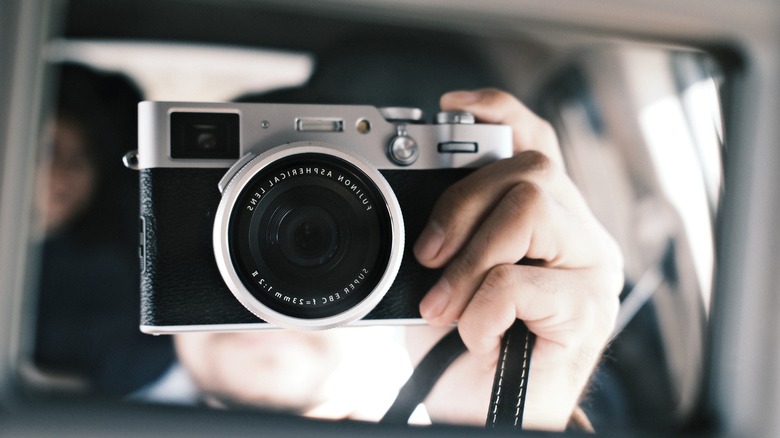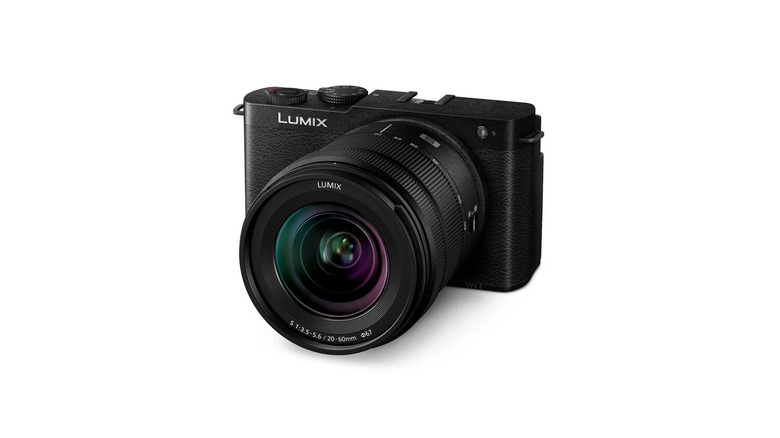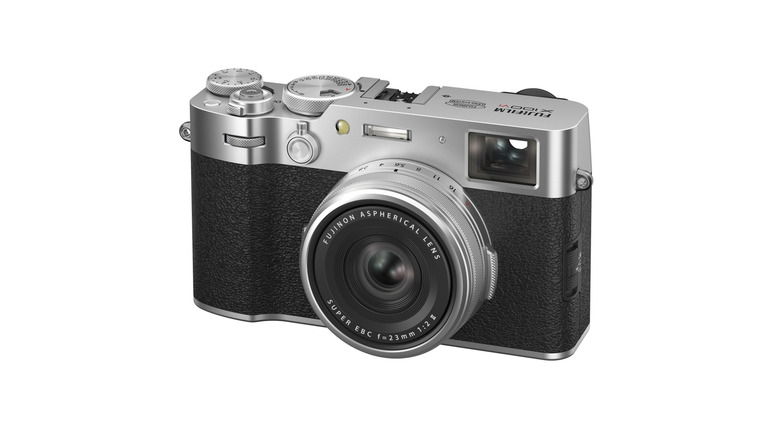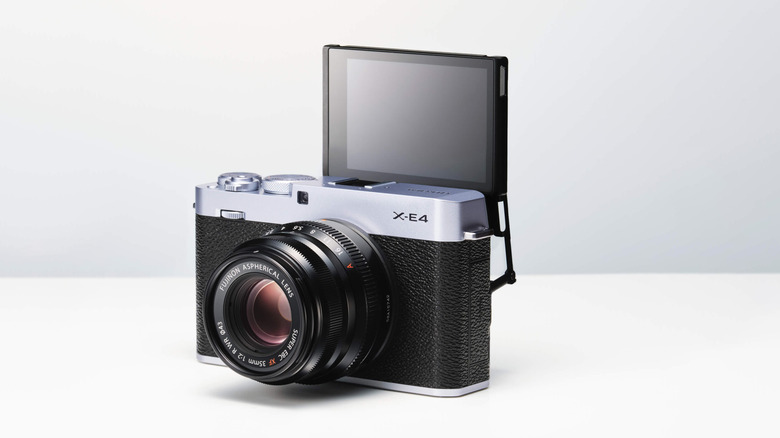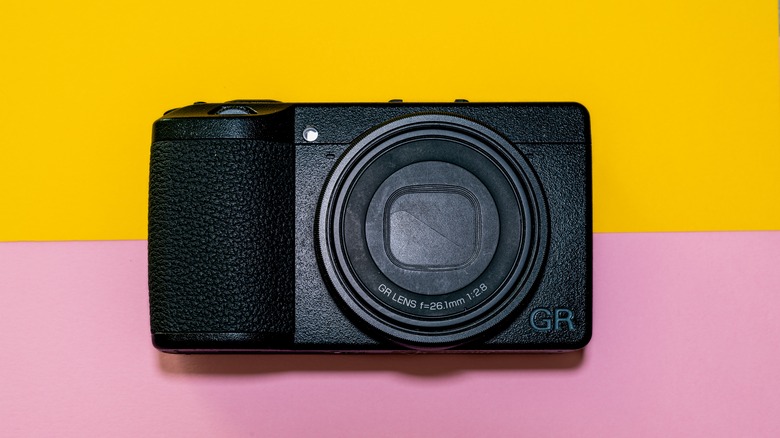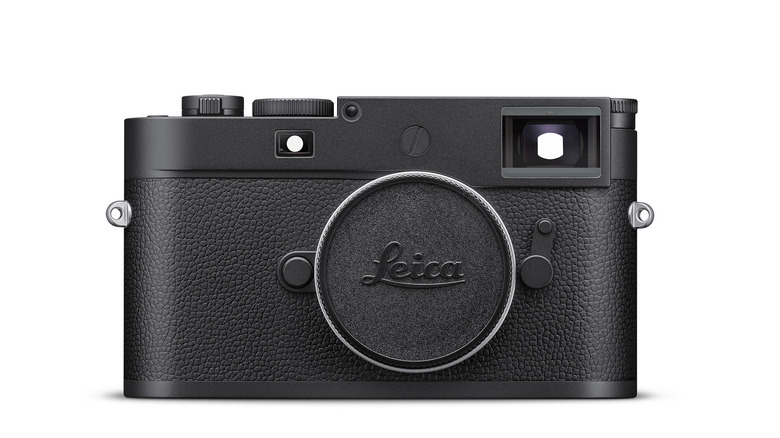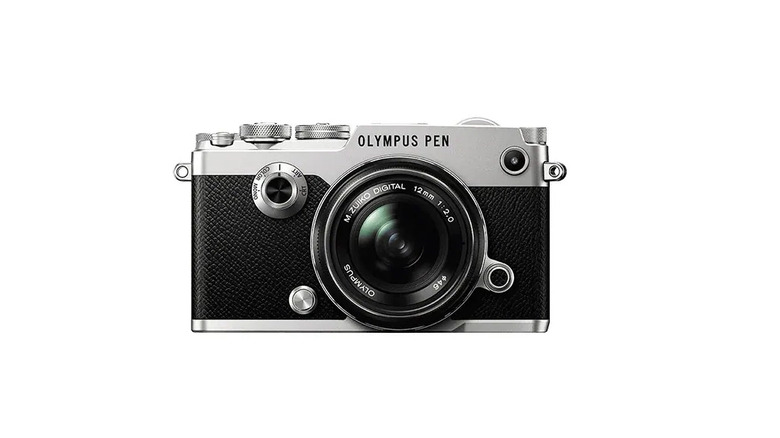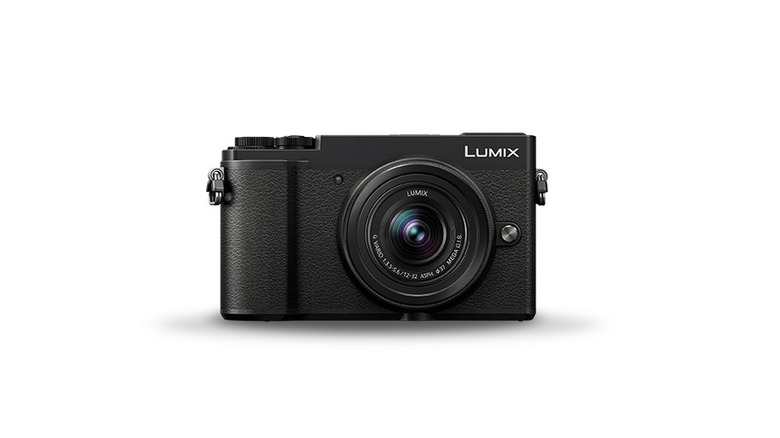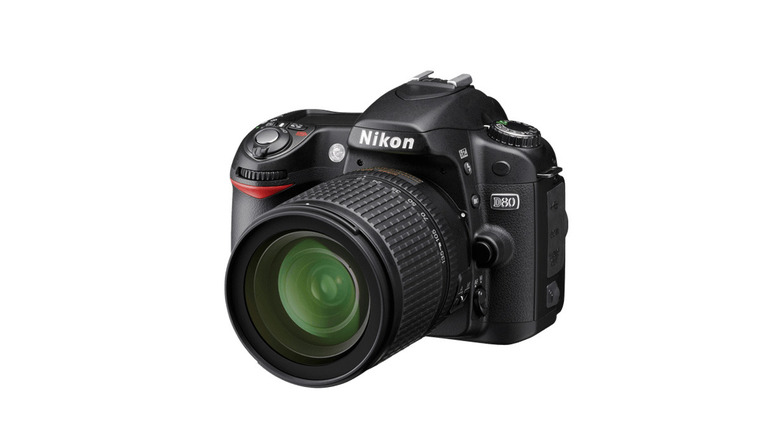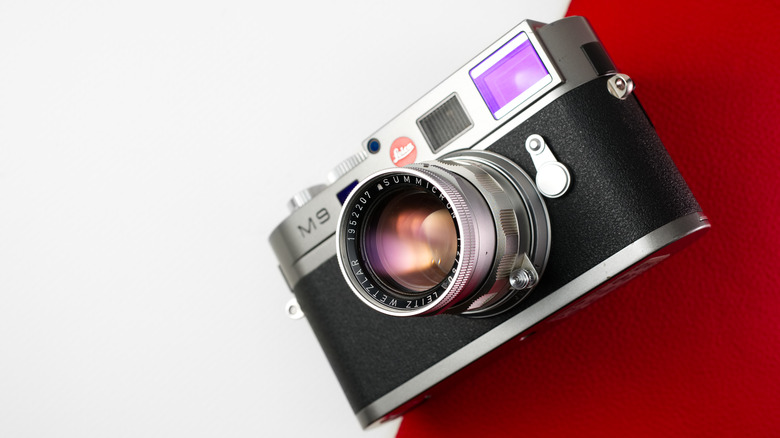9 Digital Cameras That Can Capture Film-Like Photos
We may receive a commission on purchases made from links.
Using vintage digital cameras has recently become a trend, particularly among Gen Z folks. It might only be a fad, but the imperfect images these cameras produce do give a different vibe that strikes a chord with certain people. Film is also enjoying a resurgence, with people enjoying that vintage, grainy look. Still, not everybody is onboard as film cameras are challenging to use. Developing a film is also expensive, and you can't find it just everywhere.
It's no walk in the park, that's for sure. However, what if you could have a digital camera that can capture film-like photos? Even better — what if it feels like a vintage camera? Fortunately, digital camera companies noticed the recent trends and today you can find some excellent models that produce film-like photos out-of-camera — no post-processing required. You even get to choose between different film looks. These are expensive, but don't worry; some older digital cameras can also produce film-like images.
I had the pleasure to work with many cameras as a past user of the Nikon F-Mount DSLR cameras, and a current Micro 4/3 user. I also played extensively with Fujifilm's excellent X-Mount cameras, particularly with their film simulations, and also have experience with Panasonic's Lumix family.
Throughout this piece, I want to share my experiences and give you nine cameras that produce ready-to-share, film-like photos. We'll start with new models you can find on the shelves right now but also include low-cost, second-hand options for those on a budget.
Panasonic Lumix S9
Panasonic has long been making rangefinder-style cameras as part of its Micro 4/3 Lumix lineup. However, people increasingly opted for larger, full-frame sensors lately. Riding on that wave, Panasonic launched the affordable Lumix S9 — its first truly compact full-frame mirrorless camera. This slick-looking machine utilizes the L-Mount standard and packs a 24.2 MP full-frame CMOS sensor with five-stop image stabilization and phase-detect autofocus.
Although low on the megapixel count, the sensor can produce sharp and detailed images, even at higher ISOs. IIt can also record up to 6K open-gate videos, making it an excellent option for content creators. Unfortunately, there are quite a few compromises you need to be aware of. The Lumix S9 has no EVF to help you frame your shots better in sunlight. There's no weather resistance and it even lacks a flash hot shoe and a mechanical shutter. This is not surprising because of the big full-frame sensor. With its Micro 4/3 cameras, Panasonic didn't have those issues.
Still, one killer feature elevates the Lumix S9 over other cameras — Real-Time LUTs. These are like Lightroom presets but baked into the camera. You can edit them through the Lumix Lab computer software and then install them onto the S9 (up to 40). LUTs are available online, too, including thousands of vintage, film-like styles. "Real-Time" means you'll see how the image looks while taking the photo. Then, you can quickly share your already-edited, film-like images or videos on Instagram and impress your audience.
Fujifilm X100VI
Fujifilm's X100-Series compact digital cameras have always enticed consumers with their style and image quality. However, when testing the latest Fujifilm X100VI, we found that it's more than just a pretty camera. Thanks to the brand-new 40 MP APS-C CMOS sensor, the X100VI can produce some excellent images, even in low light. The camera's built-in 23-millimeter (35-millimeter FF equivalent) F2.0 Fujinon lens is tack-sharp, too, and free of any vignetting or distortion. The autofocus is quick and accurate, too, even with moving subjects.
I played with some of X100VI's predecessors, which are similar on the outside, and they have always been a joy to use. Dedicated physical dials give you all the control at your fingertips, with the touchscreen taking care of secondary functions. The sharp digital/optical viewfinder is a great addition, not to mention that X100-family cameras always felt great in the hands, thanks to their metal construction. Alas, you can't change the lens on X-Series cameras but using your legs to zoom-in/zoom-out creates a different perspective on photography.
However, the showstopper feature of the X100VI, like in many other Fujifilm cameras, is the film simulations. These were developed by Fujifilm color technicians to look just like the company's films of the past, and they do a very good job. Have fun with presets like Provia, Velvia, Astia, or Acros, and watch how your images instantly get that vintage vibe. You can also add grain or color chrome effects to make them more unique.
Fujifilm X-E4
If you like those excellent Fujifilm simulations but you find the X100VI's lack of lens selection an issue, no worries, because Fujifilm also has an excellent, compact interchangeable-lens camera in its arsenal. The X-E4 might look like a downgrade to some, as it houses a 26.1 MP APS-C CMOS sensor. Even so, the sensor is capable of excellent image quality throughout the ISO range. Besides, 26 megapixels are more than enough for social media sharing.
Still, the compact body and excellent lens selection burrowed into me when I used the X-E4 to take pictures of my then-pregnant wife on a three-day camping trip. I got to play with the excellent XF18-55-millimeter F2.8-4 zoom lens but found that the compact body worked best with primes, like the sharp XF35-millimeter F2 lens. These made the X-E4 much more versatile than the X100VI and its wide-angle lens. Unlike its fixed-lens cousin, for example, the X-E4 can even be turned into a professional portrait machine with the outstanding XF 50mm F1.0 WR lens. Choose the soft Astia film simulation, and those portraits will look truly vintage, almost ethereal.
Of course, the X-E4 is not without its downsides. It doesn't have nearly as many controls as the X100VI, so you'll spend more time scrolling around menus to adjust some parameters. The X-E4 also lacks in-body stabilization, and its autofocus system isn't useful for fast-moving action. However, it can easily fit in small backpacks so you can always carry it around.
Ricoh GR III/GR IIIx
Having a small camera with a large sensor has long enticed consumers, but no one does that better than Ricoh. The brand's GR cameras always had a thin body and a retractable lens that made them truly pocketable, while housing a sizeable APS-C sensor.
We found that the latest Ricoh GR III was hugely appealing. It could fit inside colleague Chris Davies' front jeans pocket while producing image quality that smartphones simply can't touch. This is especially true at higher ISOs, with the GR III's 24 MP sensor produced almost noise-free images up to ISO 6,400 and usable images if you go higher.
The Ricoh GR III has some limitations, though. Namely, you are limited to the 28-millimeter F2.8 lens only. Ricoh does offer a model with a tighter 40-millimeter lens, the GR IIIx, but this means you'll have to make a tough decision when choosing between the two. Also, the GR III is five years old by now, so its autofocus and video features aren't up to snuff.
You'll forget about all those limitations when you are on the field with the GR III. This applies even more so when you start using the film simulations, which bring that pleasing retro vibe. The community around these cameras is strong, too, and you'll find many recipes from other users to further tweak the images. What you are left with are ready-to-share, pleasing film-like photos.
Leica M11 Monochrom
By now, you've probably learned that having a retro camera reminiscent of the film cameras of yore means you need to accept some compromises. With the Leica M11 Monochrom you must settle with the biggest of them all. It's not the lens selection, because you can use any M-mount lens on the Leica M11 Monochrom. Leica's M-lenses are also considered as some of the finest the photography world has ever produced.
It's also not the lack of autofocus. Sure, there is a learning curve to the rangefinder manual focus, but you can become accustomed to it. The price might also be a big obstacle, but people that buy Leica cameras aren't near bankruptcy anyway. If its name didn't reveal that already, what really makes the M11 Monochrom one of the most compromised cameras is its monochrome sensor. You can only take B&W images with a camera that costs north of $9,000.
Is this madness? Yes and no. With its 60-MP CMOS monochrome sensor, the M11 Monochrom captures images that are impossible with any other camera. The lack of Bayer interpolation helps this unique Leica capture more light from the scene, resulting in less noise. The photos are much sharper and contrasting, too, looking like B&W film slides. Have a look what Andre D. Wagner produced with the camera at the streets of New York, or Flickr's M11 Monochrom group, and you'll get the gist. Still, if color is what you are looking for, the regular Leica M11 rangefinder camera will also do a tremendous job.
Olympus Pen-F
That Leica is certainly appealing, but let's get down to Earth and show you an excellent alternative — the Olympus Pen-F. You can only find this camera as used now, as Olympus is no longer a part of the industry; OM System bought the company in 2020 and now sells cameras under its own name. What's important here is that the Olympus Pen-F is a retro camera done right and one that will ignite your love for photography.
Sure, it uses a smaller, stabilized 20-MP 4/3 sensor and an older one at that, but I used this sensor extensively in the OM-D E-M10 MKIV, and it produced excellent images, with good noise suppression up to ISO 3200 and good dynamic range. Crucially, though, you can get some excellent film-like photos straight out of Olympus cameras. The Pen-F has what Olympus calls Art filters, most of which are crowd-pleasers. The B&W filters are great, too. The best part — you can customize the filters and produce your own unique look.
I never forget to get close and personal with the Pen-F at my local camera store. It's made from metal and feels Leica-like, but perhaps its biggest advantage is the controls — there is a button or a dial for almost any function. Handling is great, too — the Pen-F fits comfortably in the hand, despite its compact footprint. Let's not forget it also houses a solid OLED EVF. No wonder the Pen-F almost hasn't depreciated a since its 2016 launch.
Panasonic Lumix GX-9
If you find the Pen-F too expensive, then you might want to have a closer look at the Panasonic Lumix GX-9. With a similar 20.3-MP 4/3 sensor to the Olympus counterpart, the GX-9 produces very good images throughout the ISO range. It also has a good dynamic range, and a similar contrast-detect autofocus that's great for still subjects but not for moving ones.
Like the Pen-F, the GX-9 also enjoys a cult following, and understandably so. With cameras today becoming ever more stripped of controls, GX-9's button-forward layout is refreshing. It even houses an electronic viewfinder and sensor-based stabilization yet remains small. Its compactness becomes even more evident when you attach a tiny Micro 4/3 lens, like the excellent Panasonic 20mm F1.7 pancake. You can attach any Micro 4/3 lens, which is one of the most supported standards, with a lens available for any shooting scenario.
The main reason people return to the GX-9 is its excellent monochrome feature. Most notably, the L Monochrome D, which is the next best thing to the M11 Monochrom's B&W images. You can even customize this mode using different color filters to enhance the tonality or contrast of the scene or add grain to make them even more vintage. The GX-9 can produce pleasing film-like color pictures, too. For instance, desaturating the JPEGs a bit makes them look almost like a Kodachrome film. The cherry on top — you can acquire a used Lumix GX-9 for around $700.
Nikon D80
The Lumix GX-9 is proof that you don't need a fortune to capture film-like images, but what if its price is too steep for you? Enter the antique Nikon D80 — a DSLR launched way back in 2006. It's big and bulky, but that's how interchangeable lens cameras were at that day. Looking at its specs, it seems woefully underpowered, too with a 10 MP APS-C sensor, AF system with only 11 areas and no video recording.
Keep in mind, though, that you can acquire a D80 for less than $100 today. Pair it with a cheap prime, like the excellent Nikon 35-millimeter F1.8, and you'll be producing some great images. Sure, you only have 10 megapixels to play with, but you know that's plenty for Instagram.
A newer camera will destroy the D80 with a higher dynamic range and much less noise. However, there is one area where the D80 still holds its own — image tonality. The pictures you'll take with this camera have that film-like look to them, with organic noise. The colors are saturated, but in a natural way, as if no digital processing took place.
The reason why the D80 takes such images is the CCD sensor. Modern cameras use CMOS sensors, which produce technically better images, but lack the magical touch of CCDs. With the D80, you are getting one of the latest CCD cameras.
I played with a D80 a few years ago, and it never felt old — it was fast and had a quick autofocus.
Leica M9
Has that CCD sensor enticed you, but you also want the vintage feel when using the camera? Then, look no further than the M9 digital rangefinder — Leica's last digital rangefinder with a CCD sensor. If it looks a lot like the M11 and M11 Monochrom, that's because Leica doesn't change design much throughout the years, like Porsche with the 911. Even older M-series film cameras look similar. Thus, you'll get the same handling experience — including the stellar build quality. Like an old 911, the M9 also commands a premium price, with prices for used models starting at $2,000.
You can expect even more enchanting images from the M9 since it's Leica. Its 18-MP full-frame CCD sensor has enough resolution even for modern photography, and colors to die for. There is something special about the images coming from the M9. It's probably the closest a digital camera has ever got to mimicking a film. The B&W photos you take with the M9 are otherworldly, too. Even today, the pictures you take with this camera will stand out online.
However, the Leica M9 is limited in some ways. Like with every rangefinder camera, it's manual-focus only and operates very slowly. Its dynamic range is limited, too, though in some images, that can be a good thing. Additionally, the highest ISO value is just 2,500. On a more positive note, the M9 will work with any M-mount lens. This is important, as the lens also plays a big part in producing those film-like images.
